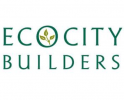Blog Post: Back to the Future - The New Bio Economy
By Shayne Korithoski
From Hydrocarbon to Carbohydrate Economy
The excitement continues to grow for building a new economy--an economy that as David Korten recently wrote in Yes Magazine “seeks to bring the way we live into alignment with the structure and dynamics of Earth’s biosphere.” This new economy acknowledges the need to move away from non-renewable hydrocarbons towards renewable carbohydrates. The idea of a carbohydrate economy is not a new one; industrialist Henry Ford first talked about it in the early 1930s: “Why use up the forests which were centuries in the making, and the mines which required ages to lay down, if we can get the equivalent of forest and mineral products in the annual growth of the fields?”
A new carbohydrate-centred industrial design paradigm points to solutions to current environmental problems. For one, harvesting annual bio-material crops reduces the need to use old-growth forests for biomass, or petrochemicals for polymers. Of course, not all carbohydrate-based products are created equal. Consideration must be given to how crops were grown and harvested, whether pesticides and synthetic fertilizers were used, and if top soil was depleted or replenished. There are also legitimate concerns about using food crops for other industries (such as the “food for fuel” issue that has been presented with GMO-corn). Hemp and flax (organically-grown) are two crops that have been shown to have great potential for use in green building. Both crops can be grown quite sustainably in a crop-rotation, and both produce copious amounts of fibre, a by-product of seed production. Hemp is superior to other agricultural crops in terms of biomass; comparing it to wheat, for example, we find hemp yields triple the amount of fibre per hectare (and sequesters 22 tonnes of carbon dioxide per hectare as well).
Bio-material development is catching on everywhere---Europe has been at the forefront of research over the last 25 years and North America is starting to catch up. Batt insulation made from hemp and flax, Structurally Insulated Panels (SIP) made from straw, and hemp masonry materials are attracting interest and publicity. Studies have also been done on the use of mycelium or mushrooms to produce foam alternatives; one company, based in upstate New York, has produced a styrofoam packaging replacement now being test-marketed by the likes of Dell and Steelcase. The company also intends to produce a SIP for use in green building projects.
More and more attention is being given to the use of hemp masonry materials, produced from using processed hemp fibre and a mineral binder such as natural lime or magnesium cement. This form of construction has been advancing in France and more recently in Ireland and England as well; the technique of using hemp and lime in buildings is centuries old, however. Hemp buildings have been shown to be highly insulative, fire and mold resistant, extremely durable and carbon neutral. In Canada, where the hemp industry is now over 15 years old (growing hemp is still prohibited in the U.S.), several provinces have invested significant amounts of capital in secondary processing for bio-materials, one example being the Alberta Government’s decortication plant in Vegreville (decortication separates the two types of fibre). Other privately owned facilities exist in Manitoba and Ontario. Now pending in the province of British Columbia is a processing plant slated for construction near 100 Mile House, where there is keen interest in developing a hemp fibre industry.
Healthy Materials
Developing healthy materials is also a huge imperative for the green building industry. Bio-materials can be developed using non-toxic binders, but unfortunately not all manufacturers are currently choosing them. It is quite common to come across board or sheeting products that were produced using organically grown flax or hemp and subsequently combined with a binder containing formaldehyde. We need to get the word out about the toxic nature of chemical adhesives such as formaldehyde. As the green building industry becomes more transparent, stamping their products with ingredient fact boxes such as the new Declare system from the International Living Future Institute and the Healthy Building Network’s Pharos Lens, more people will hopefully become aware of what is in products and whether or not they contain any toxic and/or carcinogenic compounds.
Luckily, lots of work has been done on developing bio-materials that meet high standards, such as the rigorous Living Building Challenge Red List Ready status. Binders such as magnesium oxide or natural lime pose no risk and have attributes such as fire resistance that are ideal when creating green materials.
Bio-Regional Model
The old economy largely abandoned local manufacturing in favour of exporting jobs overseas because of cheap labour, but now those jobs are starting to come back. Not enough attention has been given in the past to looking at where the materials are coming from and how they are made. The case of imported toxic drywall in 2008 is a perfect example of how something tragic can happen when the manufacturing is sub-contracted out and the company that distributes the product does not oversee what is going into that product---most houses made with the hydrogen-sulfide contaminated drywall had to be demolished. This was a real shame and something we just cannot afford to have happen again. By relocalizing manufacturing, we can have greater control over quality and can ensure the production of non-toxic, healthy building materials. An added bonus will be the creation of many meaningful green jobs. The bio-material industry is perfectly positioned to help bring this new paradigm into fruition. When we keep industries local, carbon emissions are reduced, local farmers are assured demand for their fibre crops and local economies start to emerge. What better way to “grow and build” a new economy, than by growing products we can build with?
How can you get involved?
- Help spread the word through social media about the emerging local living economies and buildings movements. Visit www.livingeconomies.org and www.living-future.org and follow their Facebook groups, also check out this article by David Korten in Yes Magazinehttp://www.yesmagazine.org/blogs/david-korten/living-buildings-living-economies-and-a-living-future
- If you live in the United States, visit www.VoteHemp.org and lobby your congressperson to support industrial hemp legislation that has currently been put forth by Congressman Ron Paul.
- If you’re looking a building a new house or retrofitting an existing one, consider using materials made from local bio-material companies.
- Take a Permaculture Design Course (PDC) and learn how to live more sustainably.
Shayne Korithoski is a co-founder and managing partner at Biostruct. He is passionate about sustainable living and permaculture and is currently working on building a few hemp houses.www.biostruct.ca / www.earthshine.ca
____________
Category:



































